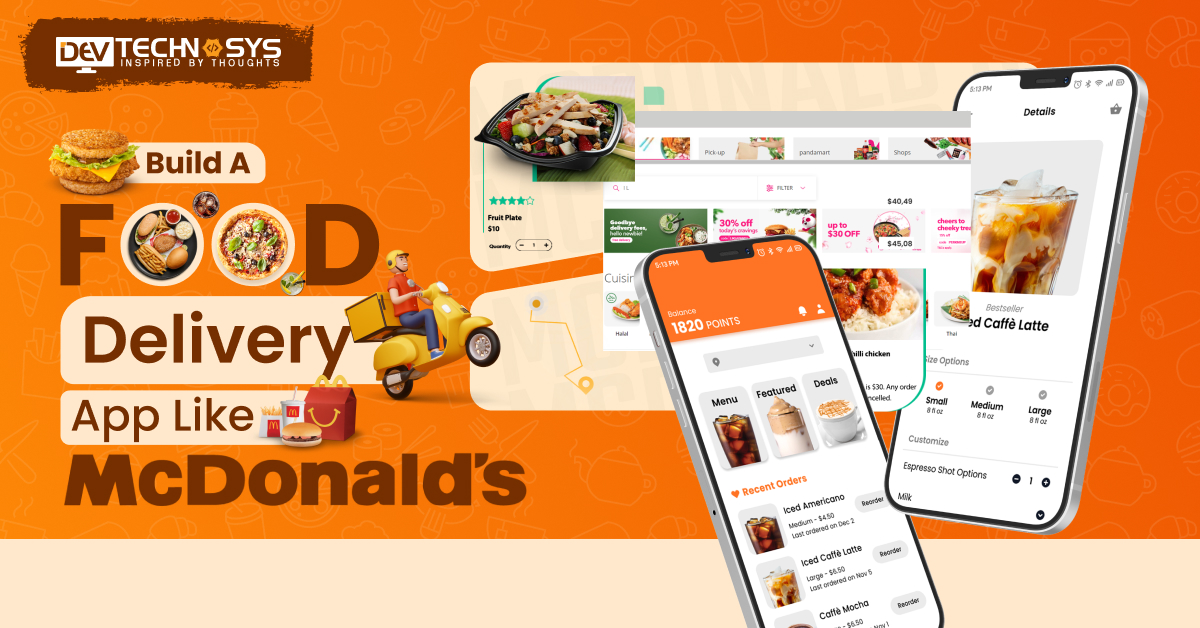Are you fascinated by the robust functionality and success of software like Fishbowl? Developing a similar inventory management solution requires a deep understanding of the cost and features involved.
In this blog post, we will explore the key aspects of developing software like Fishbowl, including the financial investment required and the essential features to consider.
From inventory tracking and order management to integration capabilities and mobile access, we’ll delve into the core functionalities that make Fishbowl stand out. Whether you’re a business owner or a software developer, continue reading this blog as we uncover the cost and features necessary to create a powerful inventory management software akin to Fishbowl.
So let’s begin.
Q1. What is Fishbowl software?
Fishbowl software is a comprehensive inventory management solution designed for small and midsize businesses. It offers a range of features to streamline inventory control processes, including order management, warehouse management, asset tracking, and reporting.
Fishbowl provides real-time visibility into inventory levels, enables efficient order fulfillment, and helps optimize stock levels. It integrates with popular accounting and e-commerce platforms, facilitating seamless data synchronization.
The software’s user-friendly interface and intuitive workflows make it accessible to non-technical users. With its robust functionality, Fishbowl software empowers businesses to improve inventory accuracy, enhance operational efficiency, and make informed decisions for better inventory management.
Q2. How does Fishbowl software work?
Fishbowl software operates as a powerful inventory management system by utilizing a combination of software modules and integrations.
It typically starts with importing or manually entering product information into the system, including details such as item names, descriptions, quantities, and prices. The software then organizes this data into a central database, creating a comprehensive inventory catalog.
When it comes to inventory control, Fishbowl provides tools for various essential functions. These include tracking stock levels, monitoring item locations, managing purchase orders, handling sales orders, and facilitating order fulfillment. The system allows businesses to set up reorder points and automatically generate purchase orders when stock levels reach a specified threshold.
Fishbowl software also incorporates warehouse management capabilities. It enables users to create and manage multiple warehouses or storage locations, defining bin locations for items within each warehouse. This feature enhances inventory organization and streamlines picking, packing, and shipping processes.
Q3. What are some of the interesting facts about FishBowl?
Established Market Presence: Fishbowl has been serving businesses for over 20 years since its inception in 2001.
Wide User Base: Fishbowl has more than 70,000 users worldwide, including small businesses, midsize companies, and large enterprises.
Integration Capabilities: Fishbowl integrates with various leading accounting and e-commerce platforms, such as QuickBooks, Xero, Amazon, eBay, Shopify, and WooCommerce.
Industry Recognition: Fishbowl has received several industry accolades, including being listed on the Inc. 5000 Fastest-Growing Companies list multiple times.
Mobile Access: Fishbowl’s mobile app, Fishbowl Go, enables users to perform inventory-related tasks on the go, improving efficiency and accuracy.
Manufacturing Features: Fishbowl offers robust manufacturing functionality, allowing businesses to manage bill of materials (BOM), work orders, and production scheduling.
Add-On Modules: Fishbowl offers additional modules for advanced features like barcode scanning, asset tracking, and advanced inventory control.
Multichannel Sales: Fishbowl supports businesses with multichannel sales strategies, allowing them to manage inventory across multiple sales channels.
Global Reach: Fishbowl is available in multiple languages, making it accessible to businesses around the world.
Extensive Training and Support: Fishbowl provides comprehensive training resources, including documentation, videos, and webinars, to help users maximize the software’s capabilities.
Q4. How to use Fishbowl?
To use Fishbowl software effectively, you can follow these general steps:
Installation and Setup:
- Obtain the Fishbowl software and install it on your computer or server.
- Launch the software and go through the initial setup process, which may involve configuring basic settings and connecting to relevant integrations, such as accounting or e-commerce platforms.
Product and Inventory Setup:
- Enter or import your product information into Fishbowl, including item names, descriptions, SKUs, prices, and quantities.
- Organize your inventory by creating product categories or groups to easily navigate and search for items.
- Set up any additional details related to your inventory, such as units of measure, reorder points, and preferred vendors.
Warehouse and Location Management:
- Define your warehouses or storage locations within Fishbowl, taking into account the physical layout of your facilities.
- Create bin locations within each warehouse to specify where items are stored.
- Assign items to their respective bin locations to accurately track their availability and facilitate efficient picking and stocking.
Purchasing and Receiving:
- Generate purchase orders within Fishbowl based on inventory needs and reorder points.
- Send purchase orders to suppliers or vendors through the software or export them for external communication.
- Receive incoming shipments and update inventory quantities by recording received items in Fishbowl.
Sales and Order Fulfillment:
- Create sales orders in Fishbowl when customers place orders.
- Allocate items from inventory to specific sales orders, ensuring accurate stock reservation.
- Generate pick tickets or packing lists to guide warehouse staff in picking and packing items for shipment.
- Ship orders and record relevant information, such as carrier details and tracking numbers, within Fishbowl.
Reporting and Analysis:
- Utilize Fishbowl’s reporting and analytics features to gain insights into inventory levels, sales performance, and other relevant metrics.
- Customize reports based on your specific needs and preferences to monitor key aspects of your inventory management.
Q5. What are the Top Competitors of Software?
Fishbowl software operates in the inventory management space and has several competitors offering similar solutions. Some of the top competitors in the inventory management software market include:
QuickBooks Enterprise: QuickBooks Enterprise is a comprehensive business management software that includes inventory management features. It integrates seamlessly with QuickBooks accounting software and provides basic inventory control functionalities.
TradeGecko: TradeGecko is a cloud-based inventory management platform designed for small and medium-sized businesses. It offers features such as order management, inventory tracking, and integrations with e-commerce platforms.
Zoho Inventory: Zoho Inventory is part of the Zoho suite of business applications. It provides inventory control features, order management, multi-channel selling capabilities, and integrations with other Zoho applications and popular e-commerce platforms.
DEAR Inventory: DEAR Inventory is a cloud-based inventory management software that offers advanced features such as batch and expiry tracking, serial number tracking, and advanced reporting. It integrates with various accounting and e-commerce platforms.
Cin7: Cin7 is a cloud-based inventory management system designed for retailers, wholesalers, and e-commerce businesses. It offers a wide range of features, including inventory tracking, order management, point of sale (POS) integration, and warehouse management.
Q6. What are the benefits of FishBowl software?
Fishbowl software offers several benefits for businesses in the realm of inventory management. Here are some key advantages of using Fishbowl:
Streamlined Inventory Control: Fishbowl provides a comprehensive set of tools and features to streamline inventory control processes. It helps businesses accurately track stock levels, monitor item locations, and efficiently manage purchase orders and sales orders.
Real-Time Visibility: With Fishbowl, you gain real-time visibility into your inventory. You can quickly view available quantities, reorder points, and inventory valuation. This visibility allows you to make informed decisions regarding stock replenishment, sales fulfillment, and overall inventory management.
Enhanced Efficiency: By automating manual inventory-related tasks, Fishbowl improves operational efficiency. It reduces the time and effort required for order processing, picking, packing, and shipping. This efficiency translates into cost savings and enables businesses to handle larger order volumes effectively.
Integration Capabilities: Fishbowl integrates with popular accounting systems, such as QuickBooks, ensuring seamless data synchronization between inventory management and financial operations. It also integrates with e-commerce platforms, enabling automatic syncing of product data, inventory levels, and orders. These integrations eliminate the need for duplicate data entry and promote accurate inventory tracking.
Reporting and Analytics: Fishbowl offers robust reporting and analytics features, allowing you to generate customized reports and gain insights into inventory performance, sales trends, and other key metrics. These insights enable better decision-making, optimization of stock levels, and identification of areas for improvement.
Scalability and Customization: Fishbowl is designed to cater to the needs of small and midsize businesses. It can scale as your business grows, accommodating increased inventory volume and expanding operations. Additionally, Fishbowl allows customization to adapt to specific business requirements and workflows.
User-Friendly Interface: Fishbowl software features a user-friendly interface with intuitive workflows, making it accessible to users with varying levels of technical expertise. This ease of use reduces the learning curve and ensures a smoother adoption process.
Q7. What is the Pricing of FishBowl Software?
The pricing for Fishbowl software varies depending on the specific edition and additional features required. Fishbowl offers both perpetual licenses and subscription options. The perpetual licenses start at around $4,395 for a single user, with additional user licenses available for an extra cost. The subscription pricing starts at approximately $395 per month for a single user, with volume discounts available for additional users. Fishbowl also offers add-on modules, such as manufacturing and barcode scanning, which have separate pricing. It is advisable to consult Fishbowl’s official website or contact their sales team for the most up-to-date and detailed pricing information.
Q8. What are the features of FishBowl software?
Fishbowl software offers a wide range of features to facilitate effective inventory management. Here are some key features of Fishbowl:
Inventory Control: Fishbowl allows businesses to track and manage inventory levels accurately. It provides real-time visibility into stock quantities, locations, and movements. Users can set up reorder points, generate purchase orders, and manage stock transfers between warehouses.
Order Management: Fishbowl enables businesses to manage sales orders efficiently. Users can create, edit, and fulfill orders, allocate inventory to specific orders, generate pick tickets or packing lists, and process shipments. It also supports order tracking and provides status updates to customers.
Warehouse Management: With Fishbowl, businesses can effectively manage their warehouse operations. It allows the creation and management of multiple warehouses or storage locations. Users can define bin locations within warehouses, assign items to specific bins, and streamline picking, packing, and stocking processes.
Manufacturing and Bill of Materials (BOM): Fishbowl includes features for manufacturing businesses. It supports BOM management, allowing users to define the components and subassemblies required to produce finished goods. It facilitates tracking of work orders, materials usage, and production costs.
Barcoding and Scanning: Fishbowl supports barcode scanning to streamline inventory-related tasks. Users can scan barcodes to quickly perform actions such as receiving inventory, picking items for orders, or updating stock levels. This feature enhances accuracy, reduces manual errors, and improves efficiency.
Integration with Accounting Systems: Fishbowl integrates seamlessly with popular accounting systems like QuickBooks. This integration ensures accurate and synchronized data between inventory management and financial operations. It eliminates the need for duplicate data entry and facilitates streamlined financial reporting.
E-commerce Integrations: Fishbowl integrates with various e-commerce platforms, such as Shopify, Magento, and WooCommerce. This integration enables the automatic syncing of product information, inventory levels, and orders between Fishbowl and the e-commerce platform, ensuring accurate inventory tracking and streamlined order processing.
Reporting and Analytics: Fishbowl offers a range of customizable reports and analytics features. Users can generate reports to gain insights into inventory performance, sales trends, purchasing patterns, and more. These reports help businesses make informed decisions and optimize their inventory management processes.
Mobile Access: Fishbowl provides mobile access through its mobile app. Users can perform inventory-related tasks, manage orders, and access critical information from their mobile devices, enhancing flexibility and productivity.
Q9. What are the Drawbacks of FishBowl Software?
While Fishbowl software offers numerous benefits, it’s important to consider potential drawbacks as well. Here are some drawbacks of Fishbowl:
Complexity: Fishbowl can be complex to set up and configure, especially for users who are not familiar with inventory management systems or software implementation processes. The initial setup and integration with other systems may require technical expertise or assistance.
Learning Curve: Due to its extensive features and functionalities, there can be a learning curve for users who are new to Fishbowl. It may take time for employees to become proficient in navigating the software, performing tasks, and leveraging its full potential.
Cost: Fishbowl software is a paid solution, and the cost can vary based on factors such as the number of users and modules required. This cost may be a significant consideration for small businesses with limited budgets or those seeking more affordable alternatives.
Customization Limitations: While Fishbowl offers some customization options, the extent of customization may be limited compared to other inventory management systems. Businesses with unique or highly specific requirements may find it challenging to tailor Fishbowl to their exact needs.
Scalability: While Fishbowl can accommodate growing businesses to a certain extent, it may have limitations in terms of scalability for very large enterprises or those with complex multi-location operations. Assessing its scalability capabilities based on your long-term growth plans is crucial.
User Interface: While Fishbowl’s interface is generally user-friendly, some users have reported that it can be somewhat dated or less intuitive compared to other modern software solutions. However, this aspect can vary depending on individual preferences and familiarity with inventory management systems.
Support and Updates: Some users have expressed concerns about the responsiveness and effectiveness of customer support provided by Fishbowl. Additionally, the frequency and timeliness of software updates and new feature releases have been points of discussion.
Q10. How Much does it Cost to Develop Software Like FishBowl?
The cost to develop a software solution similar to Fishbowl can vary significantly depending on several factors, including the complexity of the desired features, the size of the development team, the development platform, and the location of the development team. Here are some cost considerations:
Development Team: Hiring and managing a development team is a significant cost factor. This includes software developers, UI/UX designers, project managers, and quality assurance professionals. The cost will depend on the team’s size, skill level, and location.
Development Time: The development time required for a software solution like Fishbowl depends on its scope and complexity. More complex features and functionalities will require more development time, leading to higher costs. The timeframe for development can range from several months to over a year.
Technology Stack: The choice of technology stack can impact the development cost. Different programming languages, frameworks, and tools have varying levels of complexity and cost. Additionally, the need for integrations with accounting systems, e-commerce platforms, or other third-party services can affect development costs.
Customization: If you require extensive customization to tailor the software to your specific business needs, it will likely increase the development cost. Customization involves additional development effort and potentially more time for testing and quality assurance.
Maintenance and Support: Ongoing maintenance and support are crucial for software applications. This includes bug fixes, updates, security patches, and customer support. The cost of maintenance and support can vary based on the level of service required.
Considering these factors, developing a software solution like Fishbowl can involve a significant investment. The cost can range from $25000-$50000 and in some cases, it can go beyond, depending on the complexity and scale of the project.
It’s important to conduct a thorough analysis of your specific requirements, budget, and long-term business goals. Consulting with software development professionals or firms can help provide a more accurate cost estimation based on your specific needs.
























